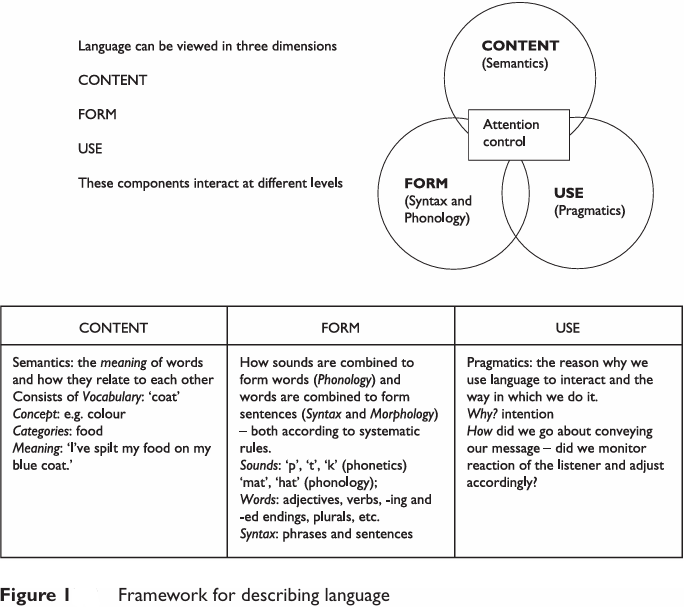


 Grammar
Grammar
 Tenses
Tenses
 Present
Present
 Past
Past
 Future
Future
 Parts Of Speech
Parts Of Speech
 Nouns
Nouns
 Verbs
Verbs
 Adverbs
Adverbs
 Adjectives
Adjectives
 Pronouns
Pronouns
 Pre Position
Pre Position
 Preposition by function
Preposition by function 
 Preposition by construction
Preposition by construction
 Conjunctions
Conjunctions
 Interjections
Interjections
 Grammar Rules
Grammar Rules
 Linguistics
Linguistics
 Semantics
Semantics
 Pragmatics
Pragmatics
 Reading Comprehension
Reading Comprehension
 Teaching Methods
Teaching Methods|
Read More
Date: 2025-04-11
Date: 2025-04-26
Date: 2025-04-26
|
Assessment of speech and language difficulties
Obviously speech and language are complex processes and assessment often will be a collaborative activity between a range of professionals, e.g. speech and language therapist, educational psychologist, teacher, and of course parent/caretaker and the pupil. Contexts make a difference to communication and language performance and a reasonable aim of assessment is to establish consistencies and inconsistencies in the individual’s communication profile across a range of contexts. If, for example, the pupil can function better in an ICT lesson than, say, in the playground, this provides useful information about how the context influences the pupil’s ability to understand and communicate. Using this information the educator can modify the environment in order to maximize performance, i.e. by the use of visual support (possibly in some cases via the use of sign language); teaching and practicing the conventions of social communication in a one-to-one or small group setting, etc.; use of a peer support ‘buddy’ in the playground; explaining the rules of games that are played in the playground; use of TA support as a facilitator of playground interaction, etc. Observation in a range of contexts is thus an important assessment strategy for pupils with SLCN. Parents/caretakers are also crucial in informing schools as how to best to communicate with their child and can supply information about activities, siblings, other relatives, interests, likes/dislikes, etc. that will enable staff to establish and sustain conversations.
Different professionals have developed different approaches to assessment and it is important that there is some shared understanding between professionals if coherent planning is to be achieved.

Speech and language therapists have traditionally used the linguistic model described in Figure 1 (Bloom and Lahey, 1978). Assessments based on this model seek to describe language in term of these functions and identify where to focus therapy and or the ‘extra or different provision’ that might be needed in educational contexts via Individual Education Plans (IEPs) (DfES, 2001a). For many children with SLCN their difficulties seldom fall into ‘neat’ categories of content, form and use due to the interdependence of these areas of language and communication.
|
|
|
|
دراسة: حفنة من الجوز يوميا تحميك من سرطان القولون
|
|
|
|
|
|
|
تنشيط أول مفاعل ملح منصهر يستعمل الثوريوم في العالم.. سباق "الأرنب والسلحفاة"
|
|
|
|
|
|
|
السيد الإشكوري: عدد الكتب الموصوفة في موسوعة مؤلّفات الإمامية بلغت 14 ألف كتاب
|
|
|